As the first image came back from the NASA OSIRIS-REx mission on 22 October 2020, everything looked pretty much as expected to the mission’s principal investigator, Professor Dante Lauretta.
It was the pictures that were received next – from the robotic explorer’s ‘SamCam’ camera – that caused the concern.
“I don’t like this,” said Lauretta, turning to systems engineer Estelle Church who stood beside him in the spacecraft operations centre at Lockheed Martin’s site in Littleton, Colorado.
“I don’t like it either,” Lauretta recalls her saying.Lauretta quickly picked up the phone to his colleague, OSIRIS-REx’s project manager, Rich Burns.
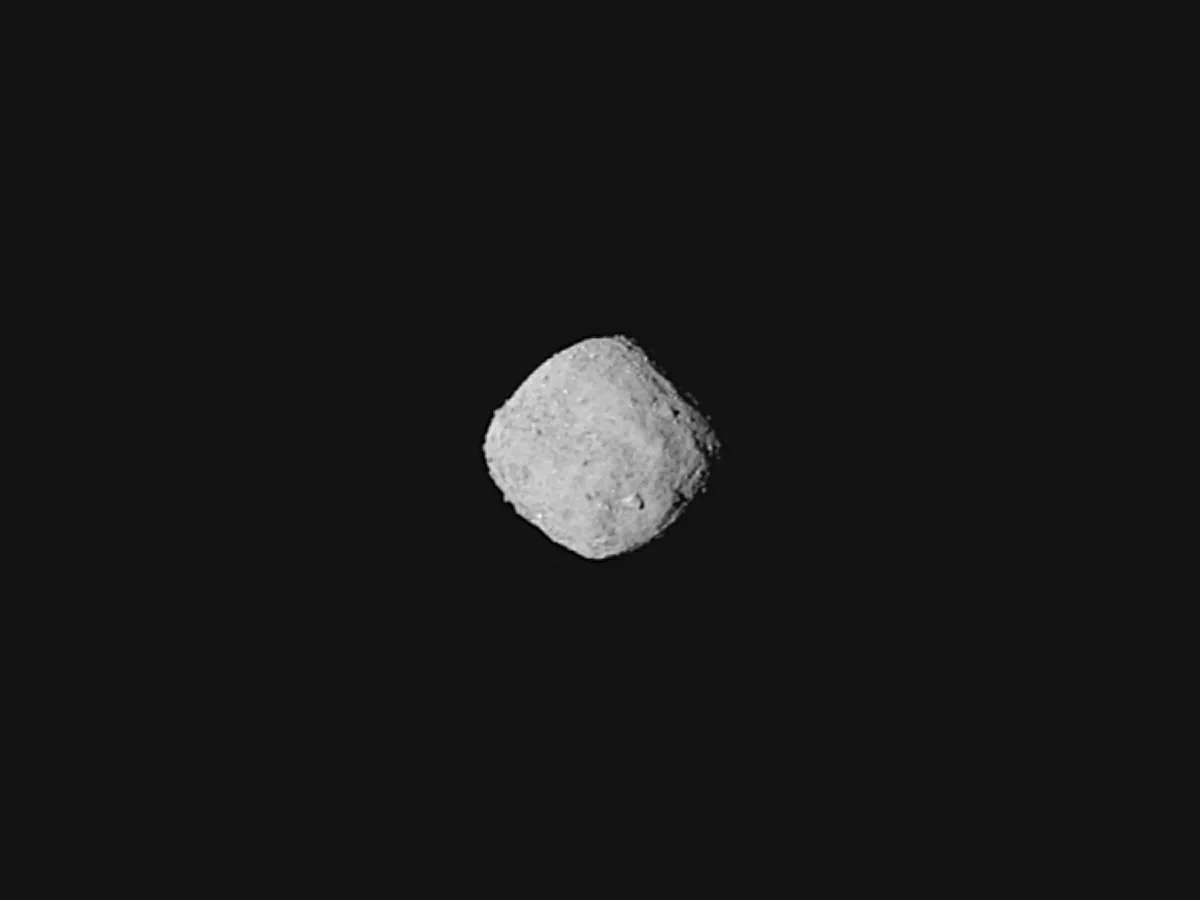
“Are you looking at the images from SamCam?,” asked Lauretta. “You need to get down here right away!”
Just days before, the OSIRIS-REx spacecraft had completed the most thrilling phase of its mission – a sampling of the surface of near-Earth asteroid Bennu.
That manoeuvre marked the crescendo of a scientific investigation years in the making, yet the mission still to complete a crucial part of its itinerary: getting home.
While the NASA OSIRIS-REx mission team will spend the coming months preparing for the engine burn that will send it Earthwards, emotions are still running high from what’s transpired so far.
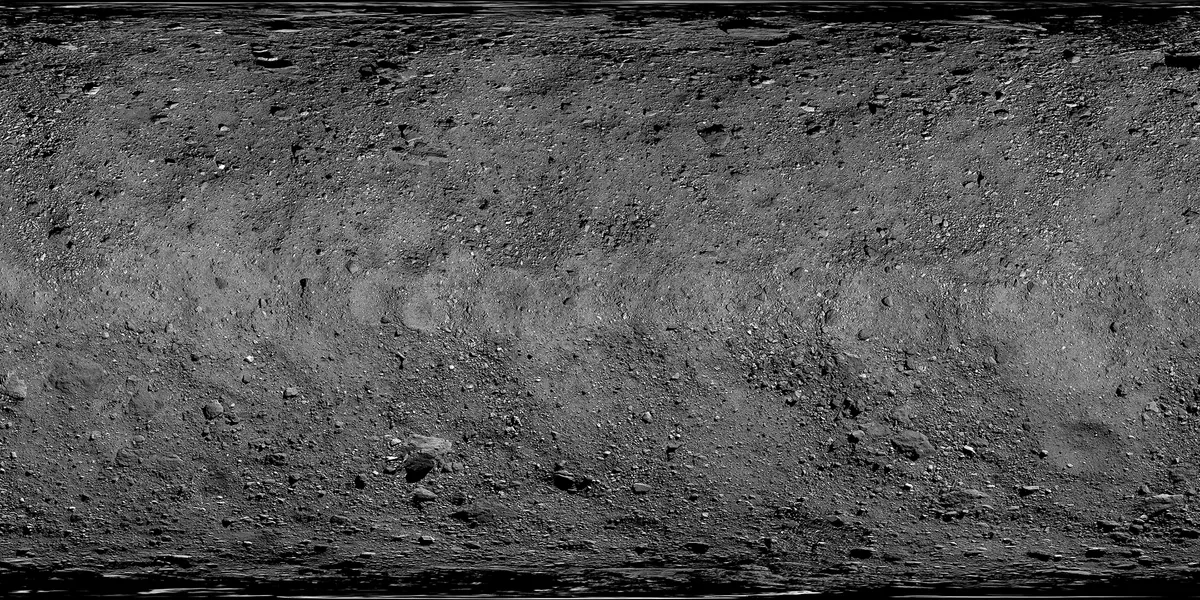
How OSIRIS-REx captured the asteroid sample
After travelling across the inner Solar System to Bennu, OSIRIS-REx – which launched in 2016 – had carried out a detailed two year-long reconnaissance and study of its rocky target.
From the outset Bennu showed that it was holding more secrets than many might have imagined.
Researchers had expected the surface of the asteroid to be largely covered in small, centimetre-sized pieces of material. Instead, images captured by the spacecraft upon its arrival showed a body strewn with enormous boulders and large rocks.
Eventually, after careful analysis, the mission team identified a patch on Bennu that was a little less rugged than its surroundings. The crater nicknamed ‘Nightingale’ would be the site of the mission’s key objective.
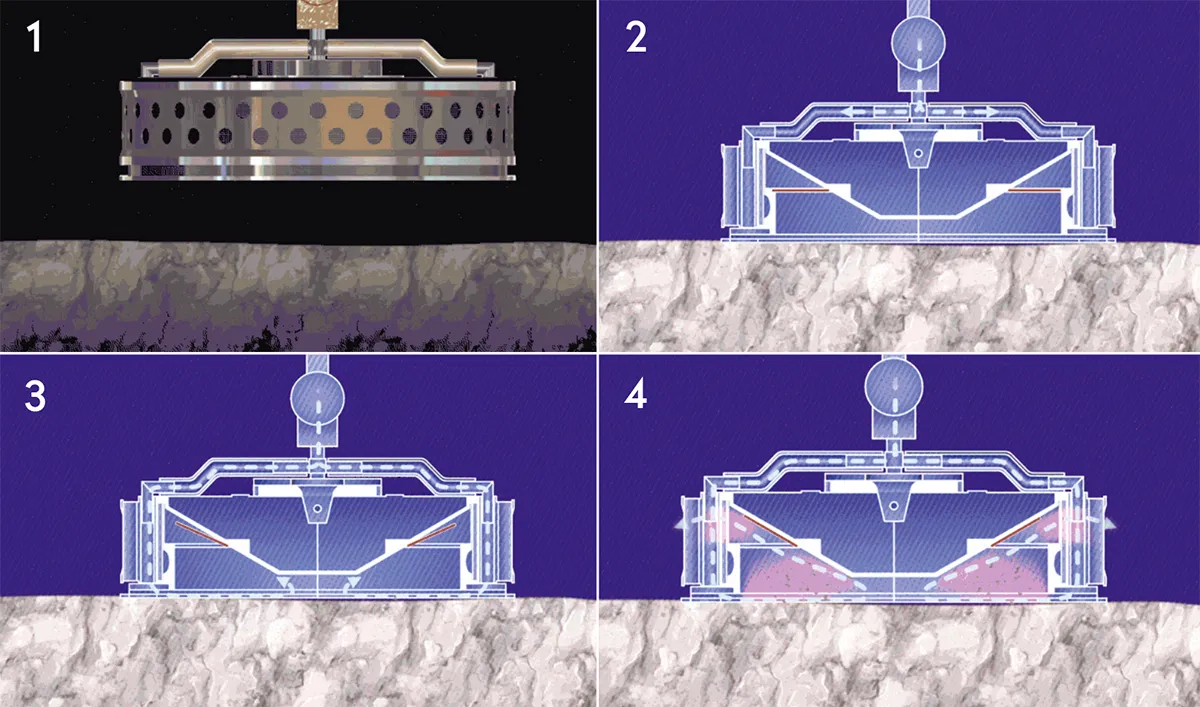
It was at this spot that the spacecraft would dive down to collect material that would be later whisked home to Earth.
At the heart of the procedure was a collector mounted to an articulated robotic arm extending out from the main body of the spacecraft.
This TAGSAM – or Touch-and-Go Sample Acquisition Mechanism – instrument would press into the surface and release a blast of nitrogen gas, forcing a cloud of rocky matter up into a shallow cylindrical compartment.
The sampling on 20 October went exactly to plan, and images returned by the NASA OSIRIS-REx mission of the spectacular operation showed the TAGSAM device embedding into the surface of Bennu and the spacecraft pulling away.
Sampling Asteroid Bennu: step-by-step
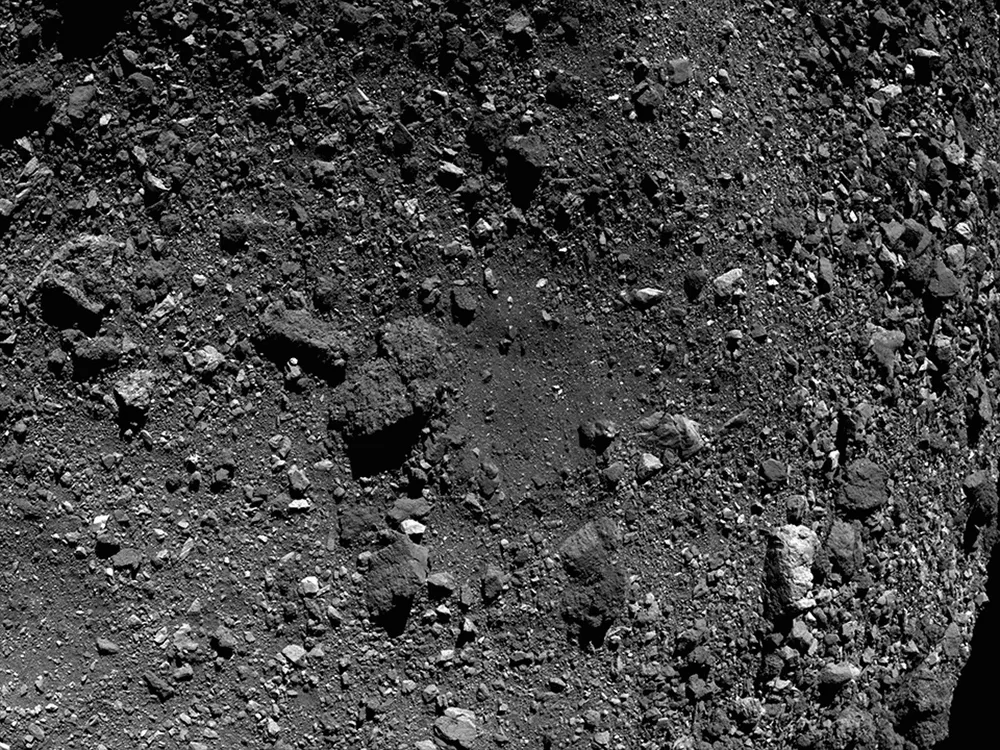
The spacecraft is descending to the rock-strewn surface of Bennu in this image from the ‘NavCam 2’ camera. The sampling site, codenamed ‘Nightingale’ by the mission team, appears in the centre as an oval area with fewer large boulders.
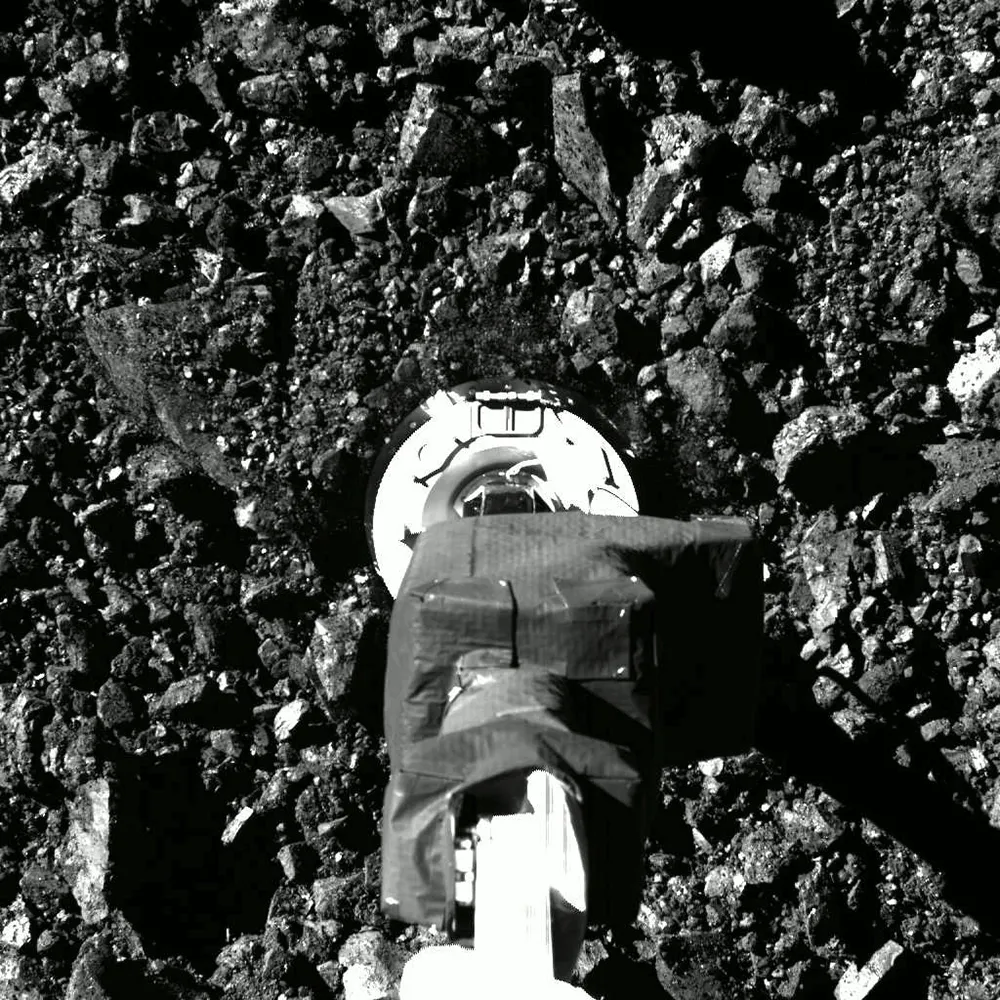
OSIRIS-REx’s sampling arm, along with the circular TAGSAM (Touch-and-Go Sample Acquisition Mechanism) device at the far end, can be seen in this SamCam camera image. This frame captures the instant that the TAGSAM collector contacts, and embeds into, the loose rocks on the asteroid’s surface.

The TAGSAM device (not pictured in this view from NavCam 2) has released its blast of nitrogen gas. Dense clouds of rocky asteroid regolith are now emanating from the sampling site as the spacecraft pulls away from Bennu.
OSIRIS-REx's asteroid leakage
The mission team needed to check that they’d actually caught pieces of the asteroid, though, so a short while later they commanded the craft to capture images at various exposure lengths of the head of the sample collector.
It was these images that were now appearing on a large screen in front of Dante Lauretta and his colleagues, causing a chill of consternation.
“As we got to the really long exposure images we could just see these rays emanating from the TAGSAM head,” recalls Lauretta.
Each ‘ray’ was the blurred trajectory of a tiny piece of asteroid drifting in front of the camera – somehow the sample that the NASA OSIRIS-REx mission had come so far to capture was escaping.
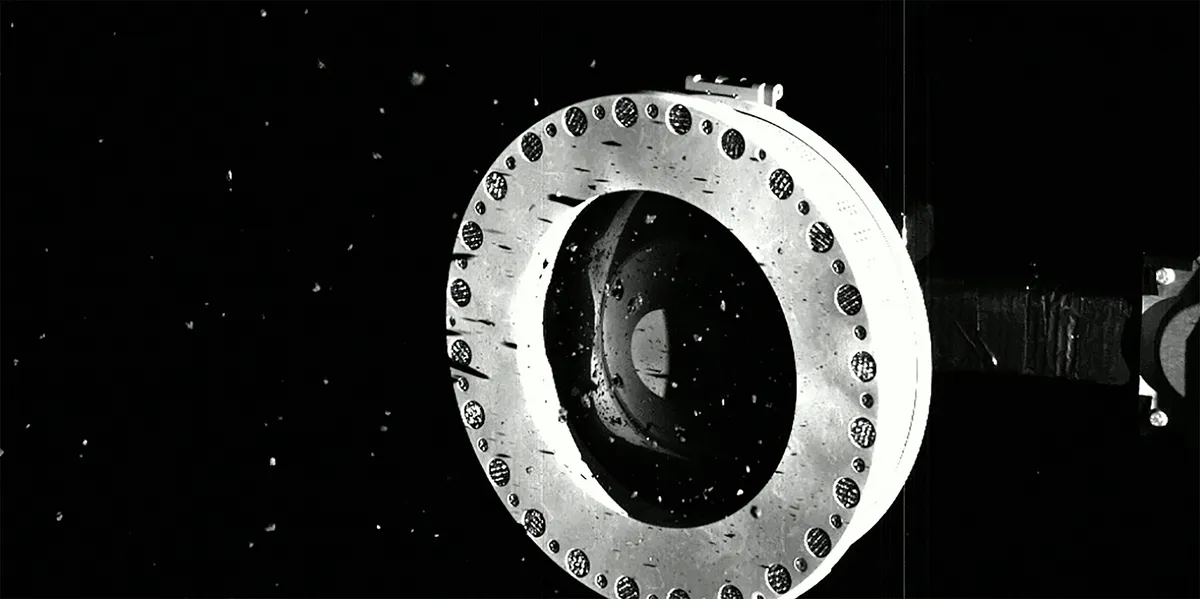
“My heart was breaking because every piece that I saw drifting away, I thought ‘that’s somebody’s PhD thesis that’s being lost into space right there’,” says Lauretta.
As the team raced to establish how the pieces were getting out of the TAGSAM container, though, a more positive picture of what the collector had snagged began emerging.
One of the images returned showed that a 3cm-wide chunk of Bennu was holding open the mylar fabric ‘valve’ that was supposed to ensconce any sample that had been captured.
Further study of the pictures from OSIRIS-REx showed another four rocks – between about one and three centimetres in size – all doing the same thing.
Although they were wedging open the collector’s valve and allowing particles to spill out, the scientists were able to conclude – based on assumptions about their density and estimates of their volume – that the five rocks represented some 30g of sample material; and all of it appeared firmly stuck in the collector.
For a mission that was tasked with bringing home 60g of asteroid that was a significant proportion of the target.
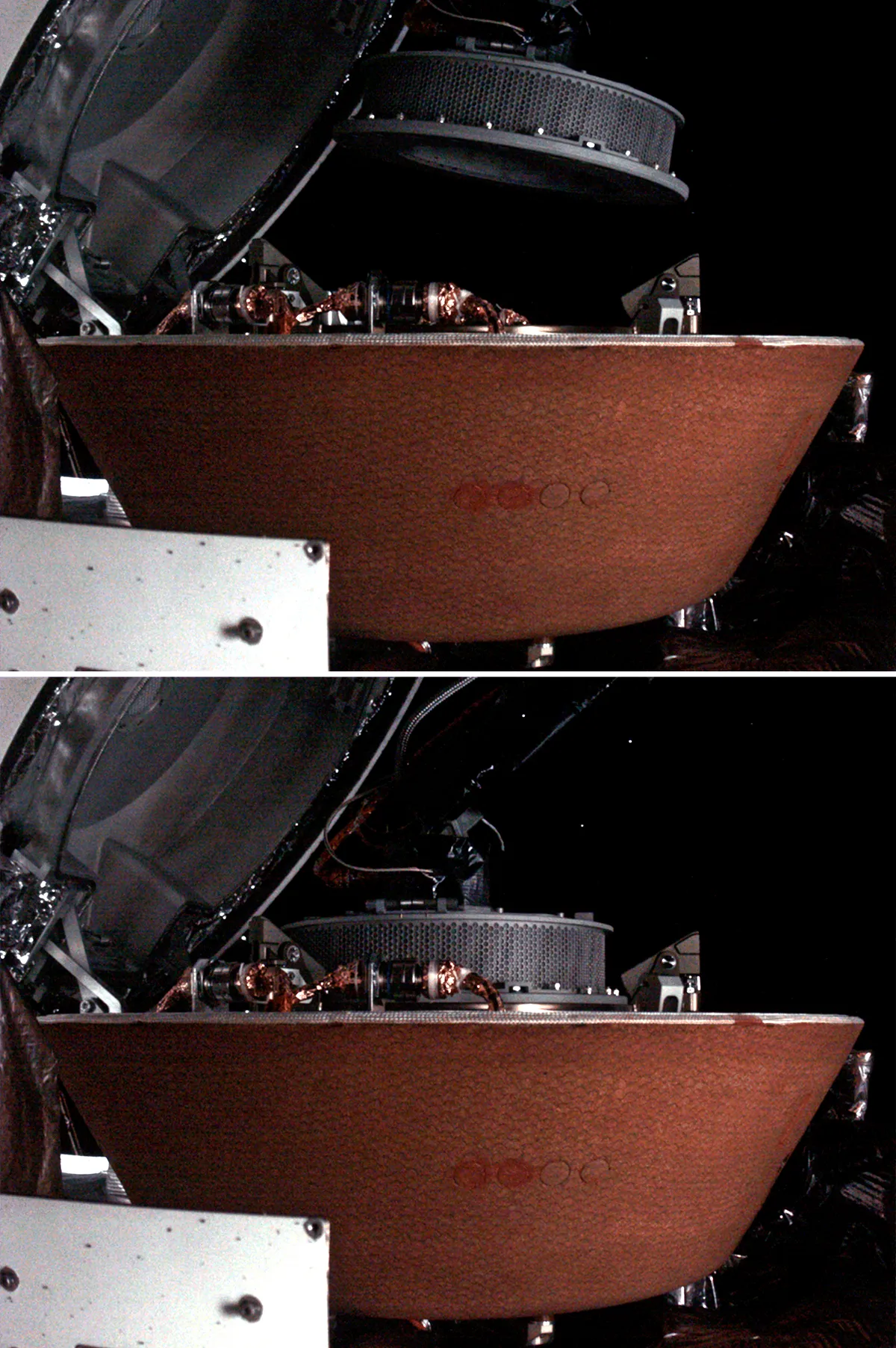
What’s more, the mesh screen that forms the wall of the cylindrical TAGSAM container appeared completely opaque, in stark contrast to identically-composed test images taken before the sampling, which showed sunlight streaming through it.
That, the researchers argued, indicated an additional 50g of asteroid material was sitting inside, obscuring the tiny holes in the mesh.
The team were even able to glimpse inside the container in one of the images sent back. “You could actually see past the [mylar] flap and see that there were black grains inside,” says Lauretta.
“It’s about 17% of the total volume of the collector that we can see in there. If it’s filling that volume that’s about another 300g of sample,” he adds.
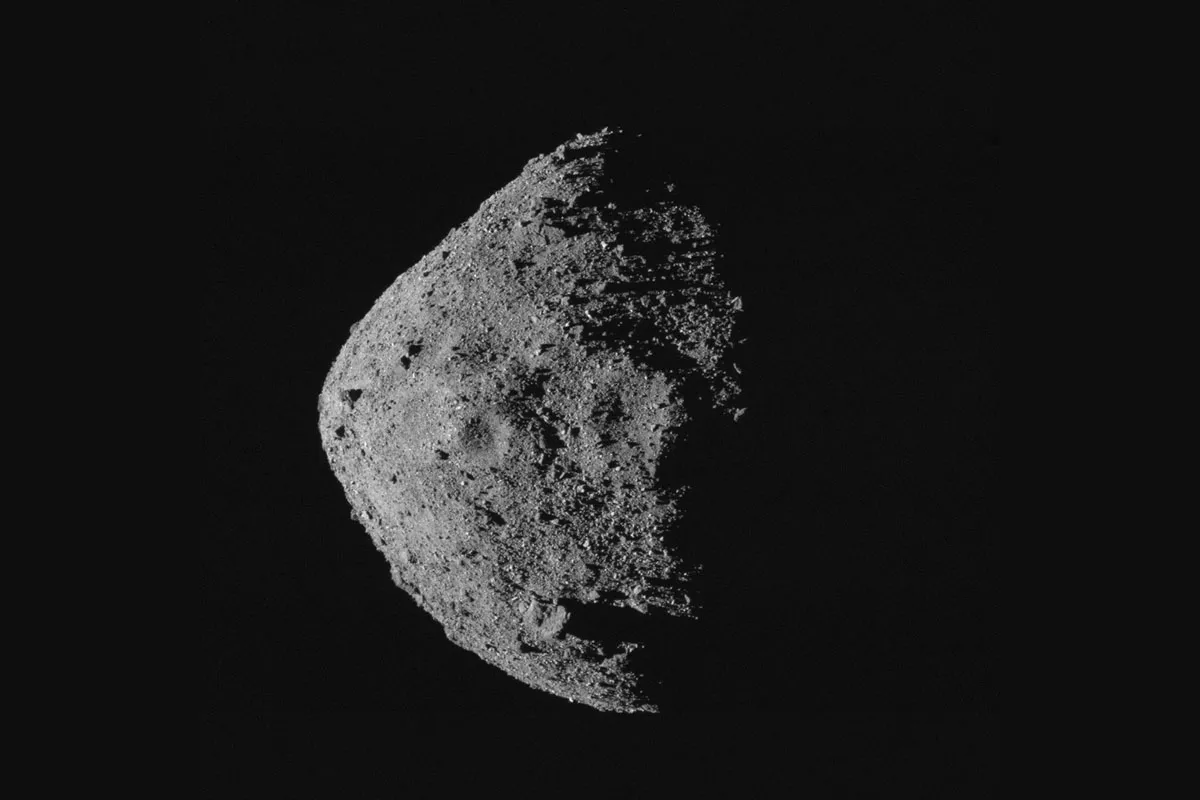
How much asteroid did OSIRIS-REx capture?
All in all, Lauretta and his colleagues believe several hundred grams of material were captured by the TAGSAM device.
A total of a hundred or so grams were likely lost, including pieces that escaped when the robotic arm moved to secure the collector inside the sample-return capsule for its journey
home – a procedure that was conducted earlier than planned to prevent more of the sample being jettisoned.
Yet even the pieces of Bennu that got away, right before the researchers’ eyes, revealed insights into the asteroid.
Prior to the spacecraft making its daring sampling attempt, the mission serendipitously discovered that Bennu is ejecting thousands of small pieces of rock out into space.
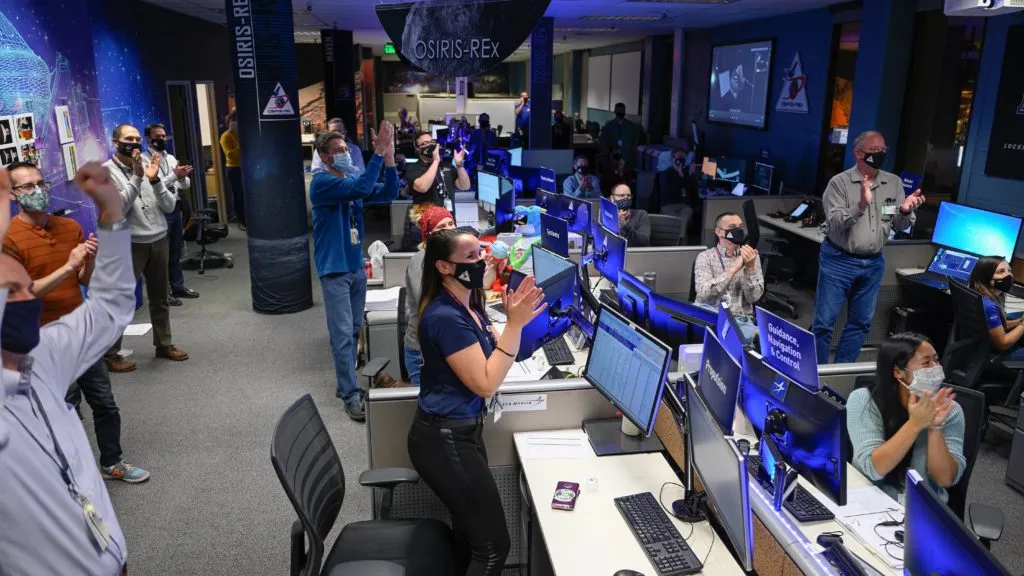
What did OSIRIS-REx's sample capture look like?
Researchers working with the OSIRIS-REx data argued that these particles had a thin, flake-like shape.
Sure enough, the pictures of material escaping from the TAGSAM collector revealed objects with just such a form.
"They look like cornflakes," says Lauretta. "We’ve got resolved imaging data of the kinds of things we think are in orbit around the asteroid, so it actually turns into a science experiment."
The images showing the TAGSAM collector plunging into Bennu, and the effects on the surface of the spacecraft’s thrusters lighting up to reverse the probe’s descent, also show fascinating physics.
Lauretta says the pictures suggest there’s extremely low cohesion between the rocks and small grains that make up the asteroid’s surface.
"Everything just moved away like a fluid. It’s like hitting a puddle of water," he says. "We just kept going. When we hit the surface of the asteroid it barely registered a force."
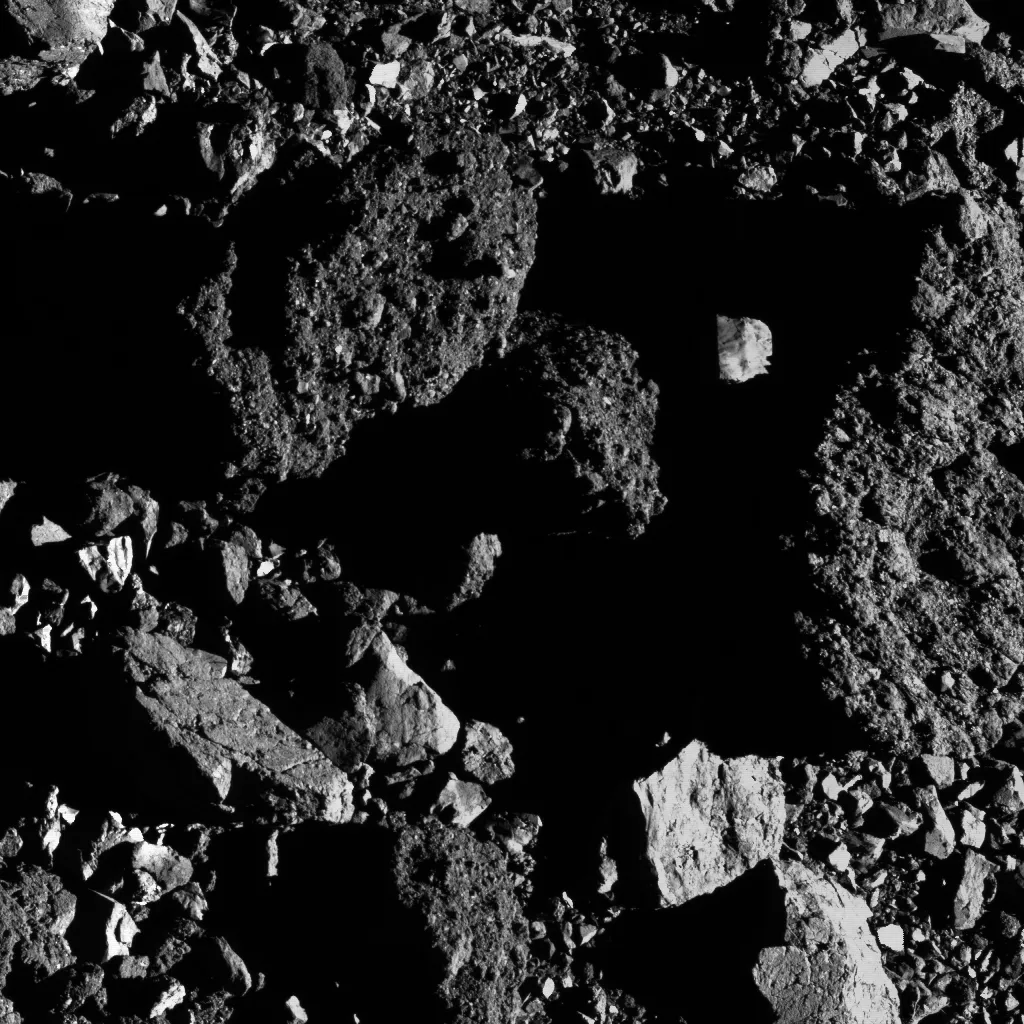
OSIRIS-REx’s experience demonstrates elegantly why some planetary scientists refer to asteroids like Bennu as ‘rubble piles’.
"It was actually 16.6 seconds after initial contact that the TAGSAM head rose above the point where the original surface was," explains Lauretta. "I don’t think there was surface there at that point because we had cratered it, but still. If we hadn’t fired those thrusters I don’t know how deep we would’ve sunk."
What lies beneath Bennu’s loosely bound surface of rocks, boulders and dust is, at the moment, anyone’s guess.
"That’s one of the next frontiers of asteroids," says Lauretta. "Probing the interior structure of these rubble piles."
Nonetheless, the sample returned by OSIRIS-REx will carry with it an immense amount of information.
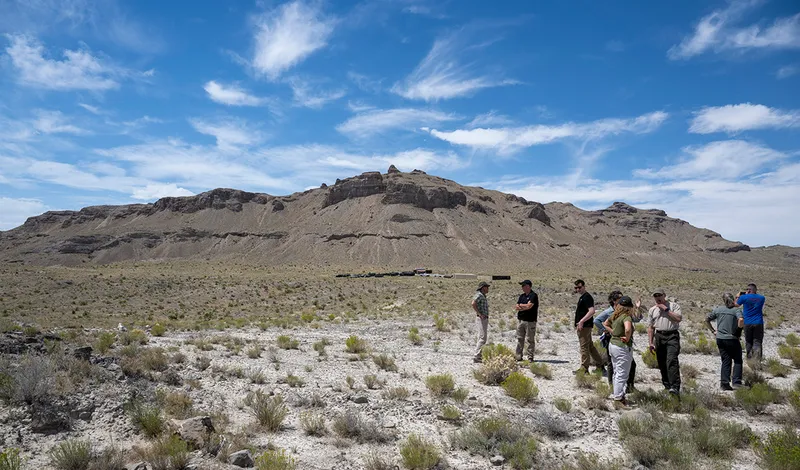
What might the NASA OSIRIS-REx mission reveal?
Having actual asteroid material to scrutinise in the laboratory offers a great advantage over remote observations made with telescopes, says Dr Luke Daly, a meteorite expert at the University of Glasgow who will be helping to analyse the asteroid sample returned by another spacecraft, Japan’s Hayabusa-2 mission.
"On Earth we can shine light on or through specific areas of it, shoot it with lasers, dissolve it, cut it up and tear it apart at an atomic level – basically really get into the guts of what exactly this stuff is made of," he says.
"Such analyses have the potential to offer profound insights into the history of our planet.
"These asteroids are rich in water and are currently the most likely candidates for delivering water and organic material to the early Earth," says Daly.
"By measuring the composition of the water in these samples we will hopefully get a conclusive answer as to where Earth’s oceans came from."

Before anyone can study OSIRIS-REx’s sample, Lauretta and his team will have to get it safely home. To do that, on 10 May they’ll command the spacecraft to fire its main engines, nudging OSIRIS-REx onto a course towards Earth and a touchdown for the sample-return capsule in the Utah desert.
"I’m always amazed and impressed with my flight dynamics team," says Lauretta. "One burn in 2021 sets us up on a two-and-a-half year trajectory that hits Earth in September 2023."
For the scientists who’ll be getting to glimpse actual fragments of Bennu with their own eyes, that’s a date that can’t come soon enough.

